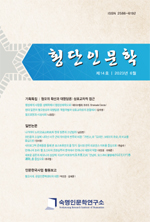부산의 극장가는 일제 강점기에 조성되었다. 이 극장가는 연극과 영화를 상연하고, 각 종 행사를 개최하는 다목적 극장들의 집합처였다. 이곳이 특히 주목되는 이유는 일본의 공연 단체와 외부 콘텐츠가 현해탄을 넘어 가장 먼저 공연되고, 한반도 전체로 퍼져나가 는 길목이었기 때문이다. 독립 이후 이 극장가는 조선의 콘텐츠를 수용하고, 지역과 중 앙의 문화 교류를 추진하는 역할을 수행했다. 그러다가 6.25전쟁이 발발하고 많은 문화 예술인들이 부산으로 몰려들었다. 1950년에는 극장의 운영이나 콘텐츠 상연이 제약을 받았지만, 1951년 이후 각 극장들은 새로운 창조의 중심지가 되어 많은 콘텐츠를 생산하 고 이를 관람하고 동시에 유통하는 역할을 담당했다. 부산의 극장가는 다시 문화 혁신과 예술 유통 그리고 창조 활동의 본거지가 되었다. 이러한 현상은 환도가 일어나는 시점까 지 계속되었고, 환도 이후에는 한국의 콘텐츠 발전과 유통에 새로운 활력을 불어넣는 추 동력으로 작용하였다.
Busan Theaters Street was built during the Japanese colonial period. This Busan Theaters Street was a gathering place for multi-purpose theaters that staged plays and films and held various events. he reason why this place is particularly noteworthy is that it was the road where Japanese performing groups and external contents were first performed across the border(Korea Strait) and spread throughout the Korean Peninsula. After independence, this theater district(Busan Theaters Street) played a role in accommodating Korean(Choseon) content and promoting cultural exchange between the region and the center. Then, the Korean War broke out and many cultural and artistic artists flocked to Busan. In 1950, theater operation and content performance were restricted, but after 1951, each theater became a center of new creation and restored the role of producing, viewing, and distributing a lot of content at the same time. Busan Theaters Street is again home to cultural innovation, art distribution and creative activities. This phenomenon continued until the time of ‘Hwando’, and after ‘Hwando’ it acted as a driving force that gave new vitality to the development and distribution of Korean contents.
1. 서론 : 연구 배경과 선행 연구
2. 부산 대표 극장의 분포와 운영 방침
3. 결론 : 피란 수도 시절 부산의 극장가
<참고문헌>
